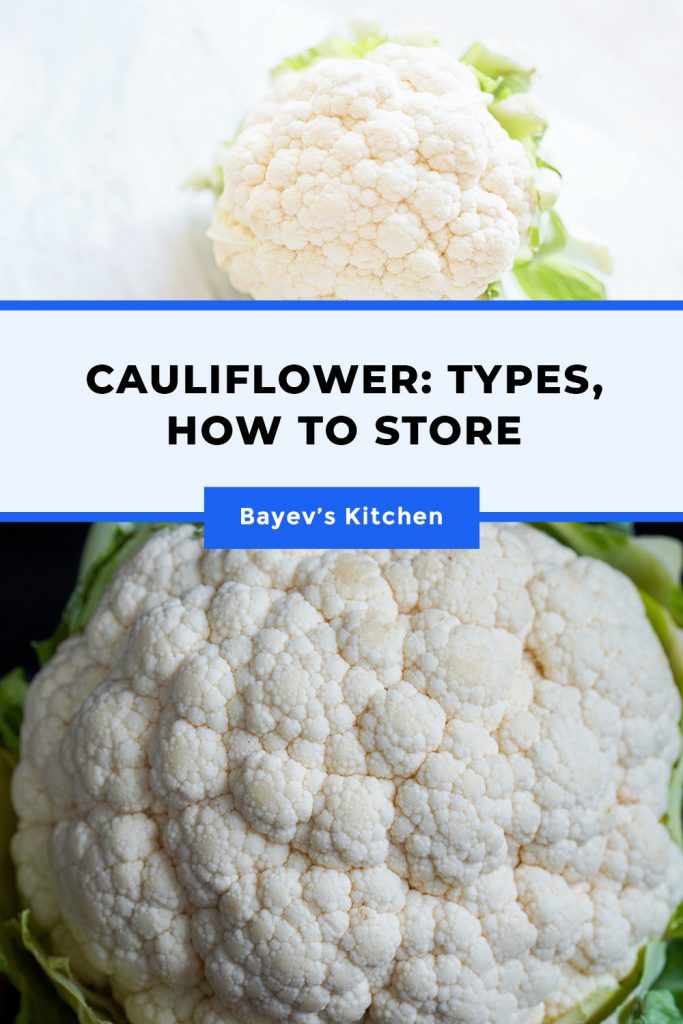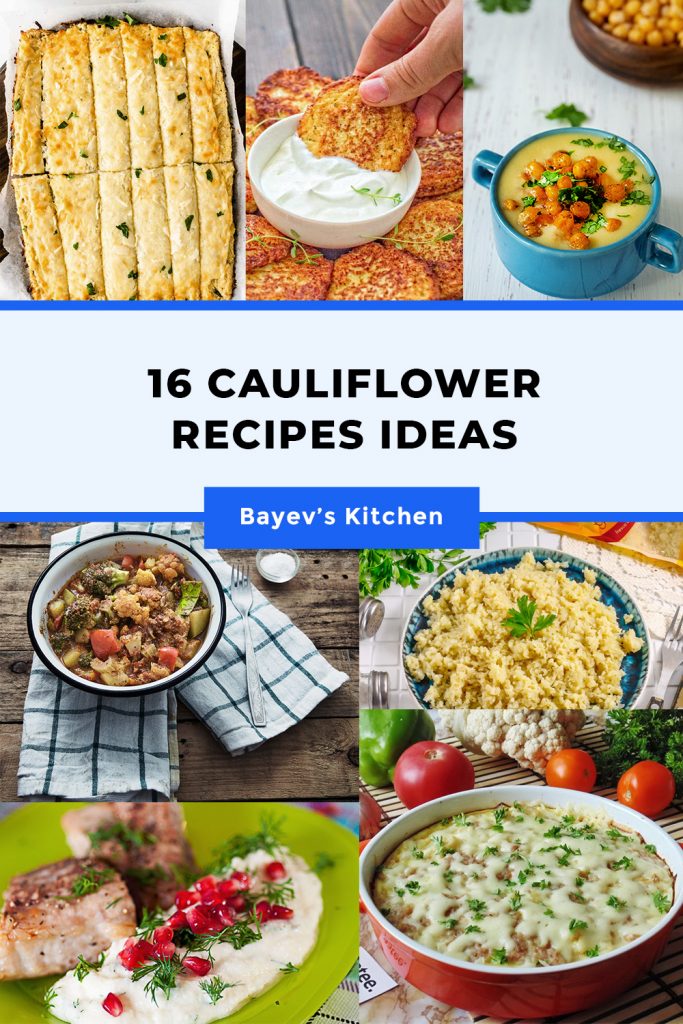Cauliflower is considered one of the best members of the vegetable family. It contains more protein and vitamin C than white cabbage. During processing, cauliflower retains more useful substances than broccoli. Cauliflower is a staple in dietary and children’s diets.
Cauliflower consists of a large, dense inflorescence formed by small, closely spaced inflorescences (spikes). Each inflorescence and the whole sprout look like a tree with a thick trunk and a curly, sprawling crown. Traditional cauliflower has bright white sprouts. Some varieties come in orange and even purple. The cauliflower cabbage is firm, crisp, with a fresh cabbage-like smell and a pleasant taste.
History
The plant in its wild form is unknown.
Cauliflower appeared in culture in the 11th century. It was first planted in Arab countries. The second name for this cabbage is Arabian cabbage or Syrian cabbage. At that time, the cauliflower was very different from today – it formed small greenish-white heads with a pronounced bitter taste, was late maturing. The Arab botanist Ib el-Beitar was the first to describe cauliflower in detail. For many centuries, cauliflower was grown only in Syria and other Arab countries.
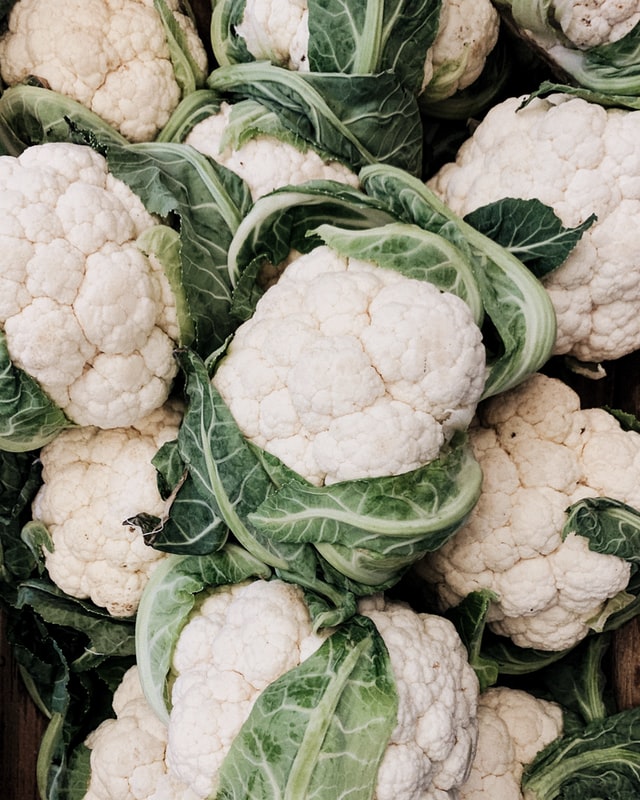
In the 12th century, the crop appeared in Europe. The Arabs brought cauliflower to Spain and from Syria it was brought to Cyprus. For many centuries Cyprus was one of the main suppliers of cauliflower seeds to Europe. In the 14th century, certain varieties of cauliflower began to be cultivated in France, Italy, Holland and England. But it was not until the fifteenth century that Europe learned of its value and began to actively cultivate it as a vegetable crop.
To this day, the English say: The best of flowers are cauliflowers – referring to the delicate inflorescence of the cauliflower head.
Cauliflower is now common throughout Europe, in North and South America, and in Asian countries such as China and Japan. It ranks second only to white cabbage in terms of the size of the crop. In Germany, cauliflower occupies 10% of the area for vegetable plants.
The leading producers of cauliflower are China and India. Secondary producers are the United States, Spain, Mexico and Italy.
Properties
Cauliflower is the most healthy cauliflower compared to other varieties. It contains vitamins A, PP, B, H, E, K, D, C and the rarest vitamin U. In addition to vitamins, cauliflower contains fats, starches, carbohydrates, organic acids, sugars, fibre, polyunsaturated acids, pectins, purine compounds, amino acids.
Cauliflower has a lot of minerals. The vegetable contains potassium, molybdenum, calcium, zinc, cobalt, iron, chlorine, copper, phosphorus, manganese, sodium, magnesium, sulphur and several others.
Calorie
The caloric value of cauliflower is 30 kcal per 100 g of product.
Protein – 2.5 g;
Fats – 0.3 g;
Carbohydrates – 5.4 g.
92% of it consists of water.
Useful Properties
Cauliflower has a rich chemical composition. This is the reason why it has such beneficial properties:
- high protein content (compared to white cabbage) for proper body development;
- Vitamin A – strengthens the immune system, is good for vision, skin, hair and nails, and speeds up metabolism;
- Ascorbic acid – participates in redox reactions, has antioxidant properties, increases resistance to infections, improves iron absorption;
- Niacinic acid – involved in hematopoiesis processes, has a positive effect on blood vessels and the central nervous system, prevents the risk of blood clots, is responsible for the production of hormones, normalises gastrointestinal function and has an anti-inflammatory effect;
- B vitamins – strengthen the nervous system, improve intestinal function, have a beneficial effect on the skin and strengthen the immune system;
- The low calorie content makes cauliflower a dietary staple.
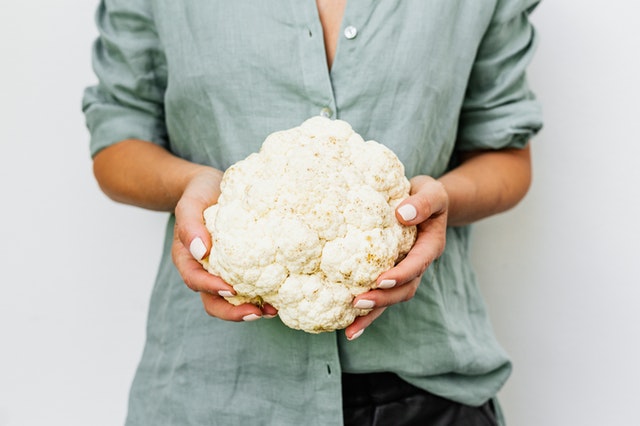
Harm
Cauliflower is a product that can cause allergies.
This cabbage should not be eaten with gout – it contains purine compounds that reduce the effect of medication.
Cauliflower is not recommended for people with hyperacidity or ulcers.
Types and Varieties
The crop varieties differ in colour and maturity.
Cauliflower varieties vary in leaf shape, size, head density and colouring, and length of ripening time.
- Early – the period from seedling emergence to head maturity is 90-110 days.
- Medium – the period from emergence to head maturity is 110-135 days. This group includes medium-early, medium-early and medium-late.
- Late-ripening – the period from seedling emergence to head maturity is 120-150 days.
The earliest cauliflower varieties mature most quickly. With later cauliflower varieties, the inflorescences are not ready for consumption until after 4 months.
How to Choose?

When selecting cauliflower, special attention must be paid to its appearance. The cauliflower should be unsoiled and undamaged.
What kind of cauliflower to buy:
- The surface of the cauliflower leaves or inflorescences must be free of dirt, deposits, spots of unknown origin or signs of mechanical damage – the cauliflower must be intact and clean;
- The inflorescences of cauliflower can be white or have a faint yellowish tinge;
- The inflorescences should fit together as closely as possible;
- Cauliflower should be dense and firm – this applies to the inflorescences, leaves and stems;
- the weight of the cauliflower must match its size – cauliflower that is too light can be grown at an accelerated rate with chemicals, there will be no succulence in the florets;
- The inflorescences of quality cauliflower should not be damaged – if there are many broken off inflorescences, the cauliflower has not been stored or transported correctly and will spoil quickly;
- cauliflower should be firm – if the cabbage is sluggish and soft when pressed, it is no longer very fresh.
- The colouring of the cauliflower inflorescences should be uniform regardless of the variety;
- If you see cabbage with only the white part and brown spots, it has already been stored for a long time;
- If the florets are tightly attached to each other but leaves are visible between them, the leaves protect the florets from drying out, so the cauliflower will be the juiciest;
- The ideal cabbage size is 600-700 grams. Larger cabbages may be overripe and will take longer to cook;
- young cabbage has crispy florets that are full of moisture – they taste better and cook faster.
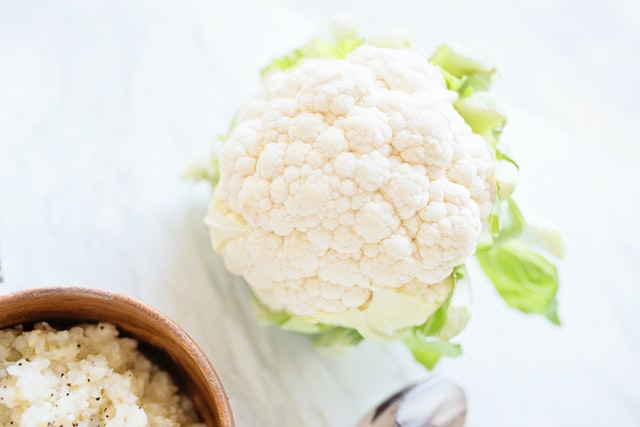
Cauliflower is spoiled if:
- If the florets are loose against each other, the cabbage is overripe – the greater the distance between the florets, the more overripe the cabbage has become;
- If the cauliflower is sluggish, the leaves do not hold their shape and the stems are withered, the cauliflower has been stored for a long time and will soon go bad;
- Yellowed inflorescences and flabby leaves are signs of stale cauliflower;
- If the surface of the inflorescences shows spots, darkening or moist spots, the cauliflower has already begun to spoil;
- The presence of an acrid or unpleasant odour from the inflorescences;
- If there are numerous insects (snails, slugs and other garden dwellers) on the cauliflower;
- Any moisture on the leaves or inflorescences of the cauliflower indicates that the cauliflower is spoiled.
How to Store?
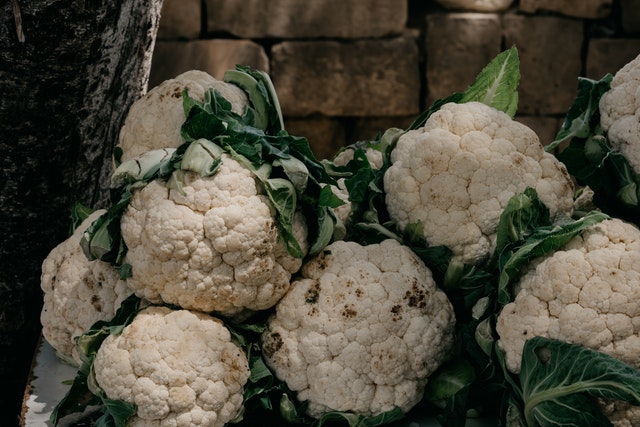
Cauliflower inflorescences are very delicate and can easily be damaged, which will lead to a rapid onset of rotting. The ideal storage option is to hang the sprouts in a cool place with maximum shade and sufficient humidity. In this condition, the cauliflower can be stored for months.
At room temperature
Cauliflower can be stored under room conditions for up to 5-7 days. To keep it longer, put it in a cold place.
In the refrigerator
The cauliflower stays fresh for about 1 week in the refrigerator. This storage option is suitable for a few heads that need to be consumed in the near future. Store the cauliflower in the refrigerator on the fruit and vegetable shelf where the temperature is kept between 0°C (32°F) and +10°C (50°F) and the humidity is 95%.
You can use methods such as this:
1. Wrap the clean heads without leaves or roots in paper. Place them in separate plastic bags. When condensation droplets appear on the foil, change the wrapping.
2. Cut the heads into florets, pour coarse salt over them and place them in glass jars. Do not cover the jars with plastic lids but with parchment.
3. You can use a brine – consisting of 1 l water to 1 tbsp salt. Rinse the cabbage thoroughly before using it.
Store the boiled cabbage in the refrigerator for no more than a day.
In the freezer
Sprouts will keep for the longest time in the freezer – up to 1 year. Thanks to the pre-cooking process, it can be used immediately for cooking.
Preparing for freezing:
1. Separate the heads of cabbage into florets and wash thoroughly,
2. Immerse in salt water for 15-20 minutes so that no insects remain inside,
3. Blanch the cabbage for 3 minutes in boiling water, then remove immediately with a slotted spoon and rinse with cold water,
4. After drying – pack the inflorescences tightly in a plastic bag or food container and write the freezing date on it.
5. Shake the bag after a while to prevent the individual florets from freezing into a clump.
Prepare the frozen product in the future without defrosting.
Do not refreeze after defrosting.
Storage methods
1. Separate the cauliflower into florets and dry them in the oven at 60°C (140°F). Place in a glass or plastic container where it can be stored for 1-2 months.
2. Salted or pickled cauliflower will keep as preserves for a very long time. If it has not been rolled, it is better to consume it within 1-1.5 months.
Application
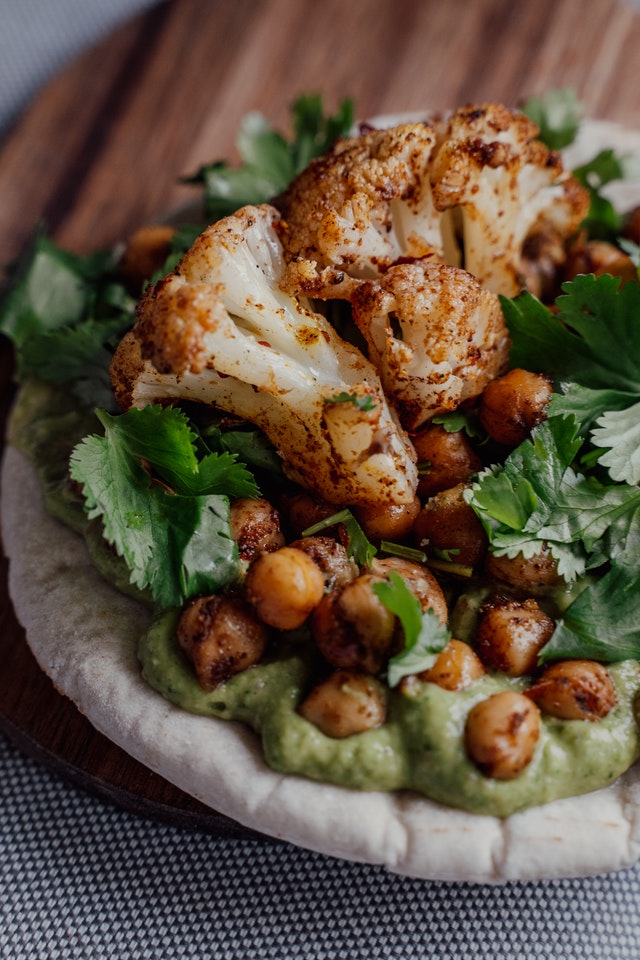
Only cauliflower florets are eaten. They can be cooked in a variety of ways. But they must first be boiled before the cooking process. Boiled heads (this is the name of the edible part of the cabbage) can be stewed, sauteed, fried, pickled, added to soups and used to make salads. Fresh cabbage heads can be eaten raw, added to salads and used to garnish meat and vegetable dishes.
Cauliflower flowers and leaves are also edible. They can be used in cooking for various soups, side dishes, vegetable and meat salads, or as a standalone main course – fried in butter with breadcrumbs and eggs.
Cabbage goes well with other vegetables, meat, seafood, mushrooms and potatoes. Cauliflower can be canned. You can sauerkraut as well as white cabbage.
Cauliflower can be preserved in glass containers. Pre-sterilise them in the oven or in a water bath. Cover the jars with iron or tin lids.
Cauliflower can be served as a side dish in its own right. Many frozen vegetable mixes contain cauliflower.

Boiled cabbage in mineral water – becomes particularly tasty.
Serve the cauliflower with sour cream, cheese, melted butter or egg and butter sauce.
Cooking
Boiled cauliflower
The cooking technique for this vegetable is simple. The cooking time determines the taste of future dishes and the preservation of as many nutrients as possible.
Cook best in a glass or enamelled container.
Before starting the boiling process:
- The cabbage should be stripped of its leaves, rinsed well and the cauliflower should be broken up into florets.
- Put the florets or the whole cabbage in a saucepan, pour boiling water over and salt lightly.
- Add milk to the water (not more than 1-2 tablespoons) to keep the colour white.
- Boil them for about 10 minutes after boiling (if the cabbage is then to be roasted, the boiling process will take up to 7 minutes).
- If you boil a whole cauliflower cauliflower, it will take at least 20 minutes.
- The larger the cabbage, the longer the time. After 20 minutes of cooking, check whether the cabbage is ready – pierce the thickest part of the stem with a fork or knife: if it can be pierced easily, the cabbage is ready.
- Use a skimmer or colander to remove the boiled vegetable to a dish.
- In the steamer, the cauliflower will be ready in 30 minutes.
- In the multicooker, this process is reduced to 15 minutes.
- When using the microwave oven, cooking will only take 7 minutes.
Cooking tips:
- Cauliflower must not be overcooked – it will turn out soft and taste unpleasant.
- An unpleasant smell occurs during the cooking process. To eliminate this, put a small crisp in the container in which the cabbage is boiling.
- Boil the cabbage in slightly sweetened water or in mineral water for a better taste.
- Do not cover the pan with a lid – the colour of the cabbage will change – it will turn yellow.
- As soon as the cabbage is boiled, take it out of the broth immediately. Leaving it in the water will spoil the taste of the cabbage.
- Cold water will help preserve the great look of the cauliflower after cooking.
In the oven

Cauliflower is deliciously tender and juicy in the oven. It can be baked with an egg, in a cream sauce, with tomatoes, with minced meat, with breadcrumbs and vegetables.
Before baking, the cauliflower should be boiled and broken up into florets. In the winter, frozen cauliflower is handy.
Pan fried
Delicious and crispy roasted cauliflower comes in a batter. Easy and quick to prepare.
The cooking times for fresh and frozen cabbage do not vary much. Boil it in boiling water before roasting so that it will be juicier and tastier after roasting. Roast the cauliflower for 7-10 minutes on each side until golden brown.
If you are planning to braise the cabbage, you can soak it in milk for a few minutes beforehand. This will make it softer and more tender. If one of the ingredients is cauliflower stew, add a tablespoon of mayonnaise to make it softer.
Pickled
Pickling cauliflower for the winter in jars involves the use of various fruits and vegetables. Carrots, peppers, beetroot and broccoli are usually used. The pickling process involves a brine, which is prepared using hot water, salt, vinegar and sugar.
Pickled cabbage is juicy, tender and crunchy. It goes well with a variety of side dishes.
Dish Ideas
1. Gordon Ramsay vegetable curry

Minimal fat, lots of fresh vegetables. The dish is quite spicy. Add some yoghurt and reduce the spiciness. Spices and spices complement and saturate the vegetables perfectly.

A tasty and quick side dish. Florets of cauliflower without breading. They are crispier that way. The dish is vegan and gluten-free.
3. Light cauliflower pizza crust

A healthy and low-calorie alternative to regular pizza. The crust is cheesy and tasty, holds up well and won’t fall apart under the weight of the sauce, cheese and toppings. The cauliflower crust doesn’t overpower the taste of any of the toppings.
4. Cauliflower purée with cream, butter and pomegranate

Tender and dense in texture. A perfect accompaniment to meat dishes, or as a stand-alone dish. Cauliflower purée tastes like cauliflower. It’s easier to make than mashed potatoes.
5. Cauliflower wings with honey and garlic

This recipe is vegetarian. The cabbage turns out tender and juicy. Beautiful golden colour, sweet honey-garlic flavour. Minimal ingredients and cooking time.
6. Creamy broccoli and cauliflower salad

Broccoli and cauliflower salad with cheddar cheese, bacon, cranberries, carrots, red onion and a light homemade dressing. Cooked vegetables create a softer texture and fresh vegetables retain their crispness. This salad would make a great side dish to grilled chicken and other meats, and grilled fish. You can use any dried fruit instead of dried cranberries . Try sultanas, dried figs, cherries or blueberries, replace Cheddar cheese with Swiss cheese, Monterey Jack or Gouda cheese, try chopped green onions in this salad and use sour cream or Greek yoghurt or kefir for the dressing.
7. Cauliflower soup

A thick and creamy, simple soup. Keto cauliflower soup is similar to potato soup, but without the carbs and without the guilt. Bacon gives a smoky flavour. Dress it with green onions, sour cream and grated cheese.
8. Regular cauliflower fritters

A simple and very tasty recipe. A great meal for children. The fritters are golden and crispy on the outside and tender and juicy on the inside. You can experiment and add onions, fresh herbs, Parmesan, feta cheese or even corn. Serve with sour cream.

Melted cheese and fresh herbs make these low-carb cauliflower sticks a pleasant and unusual dish. Spiced with fresh, aromatic herbs and flavoured with garlic – these breadsticks are the perfect appetizer or side dish for any meal.

Pakori is an Indian dish. It refers to an appetizer. They are vegetables fried in dough. There are also sweet pakoras where fruit is mixed with the dough. After cooking, the dough is dense and firm, even crispy. It softens after a few hours. The oil does not splatter during frying; the dough absorbs little of it. The pakoras are neither dry nor oily.
11. Cauliflower casserole with minced meat

A delicate, tasty casserole. It has a soufflé-like consistency. Suitable for the common table as well as for diet and baby food. Boil the cauliflower until soft; it should not be crispy. Only then will the dish be airy and tender. The dish is light and healthy. You can use minced chicken or turkey and the dish will then be completely dietary.
12. Cauliflower cream soup with crispy chickpeas

A delicate, creamy cauliflower soup with spiced chickpeas. Tastes like a combination of all the ingredients. The soup is vegetarian, but the flavour of the meat can be felt. Serve the baked chickpeas and herbs separately. Don’t add all the chickpeas to the soup at once; they get very wet very quickly and stop crunching.
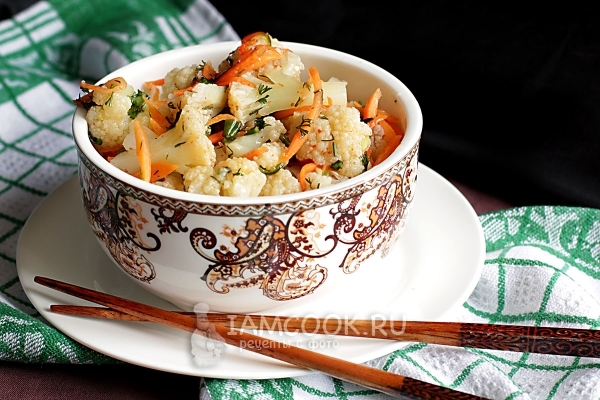
A tasty, savoury Korean cauliflower salad appetizer. Instead of lemon juice, you can use apple or regular vinegar, but in a slightly smaller quantity. You can leave out the hot peppers if you can’t stand spicy foods.
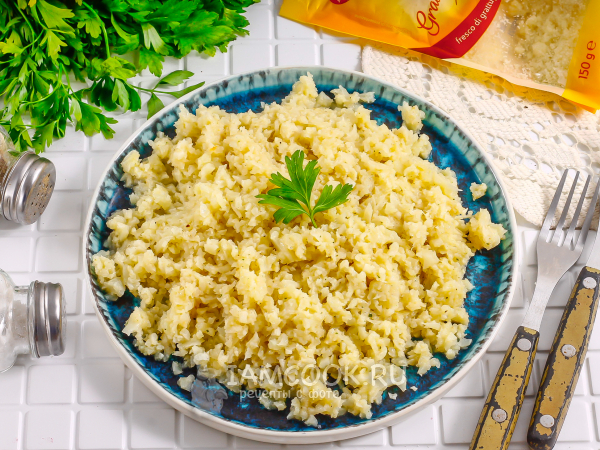
An unusually tasty side dish. Perfect to accompany boiled meats or cutlets. Risotto is sure to please. Use flavoursome and tasty cheese – it will give the dish a bright, creamy note. You can add any other dried spices, seasonings or flavourings you like.

Diet cutlets. Delicious, juicy and tender. Easy and quick to make these cutlets for breakfast or dinner. Bell peppers, spices and herbs add flavour.
16. Vegetable salad with broccoli and cauliflower

A crunchy, healthy and tasty salad of broccoli, cauliflower, cucumbers, grapes and onions. Mix everything with a little lemon juice and mayonnaise. This salad will become a popular dish on your menu. It is best served chilled.
